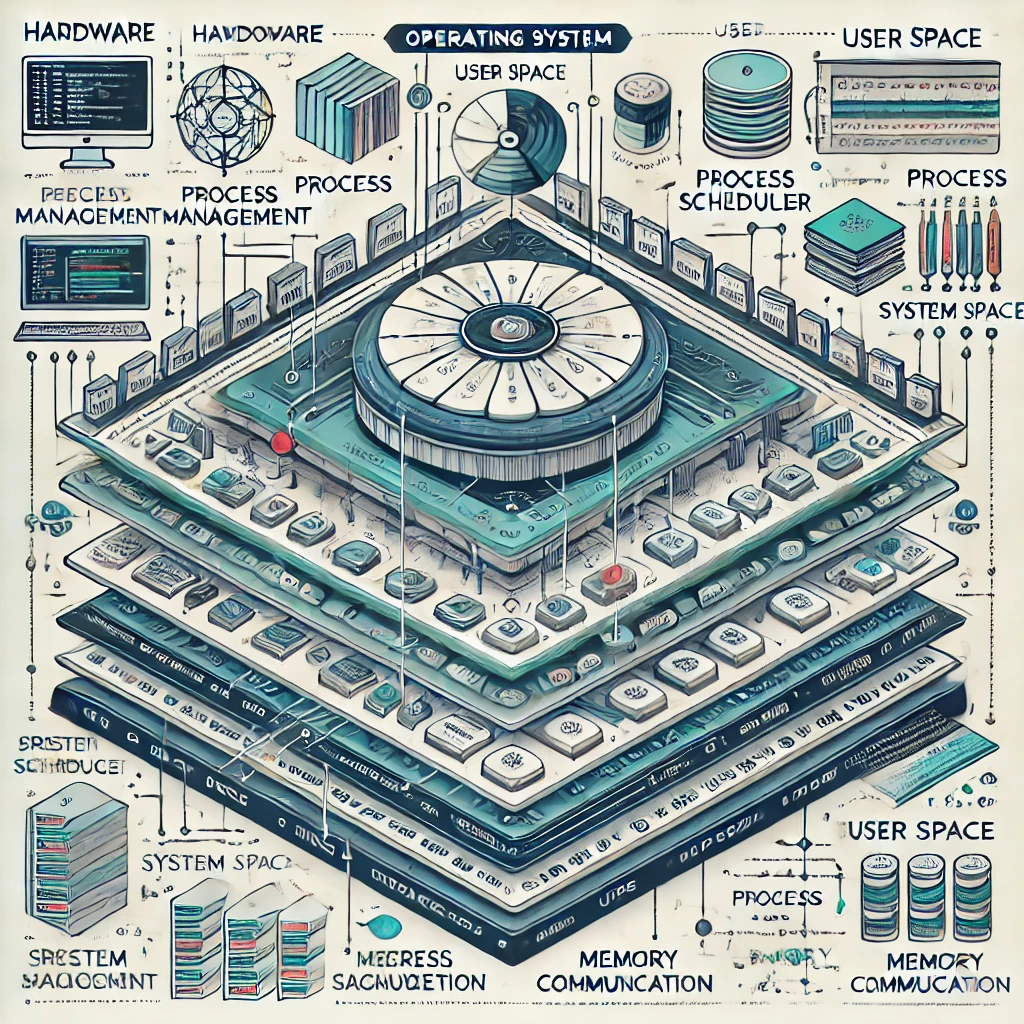Diving Deep into OS Internals and Process Management: A Learning Journey
 Md Saif Zaman
Md Saif Zaman
As a software engineer, understanding the intricacies of operating systems is crucial for developing efficient and robust applications. Recently, I embarked on a journey to deepen my knowledge of OS internals and process management, with a focus on Linux systems. In this blog post, I'll share my experiences and insights from this enriching learning adventure.
Theoretical Foundations
My learning journey began with "The Linux Programming Interface" by Michael Kerrisk, which provided a solid theoretical foundation on process scheduling, memory management, and file systems.
Process Scheduling
One of the key concepts I grasped was the importance of process scheduling in multitasking operating systems. I learned about different scheduling algorithms, each with its own strengths and use cases:
First-Come, First-Served (FCFS)
Shortest Job Next (SJN)
Priority Scheduling
Round Robin (RR)
For instance, Round Robin is excellent for time-sharing systems, ensuring that each process gets a fair slice of CPU time. It works by allocating a fixed time unit per process, cycling through them to ensure fairness.
Memory Management
Diving into memory management techniques, I found virtual memory to be a crucial concept. It provides an abstraction layer between physical memory and processes, allowing for efficient use of available memory resources.
I also explored paging and segmentation, two methods used to implement virtual memory. Paging, for example, divides physical memory into fixed-size blocks called frames and divides logical memory into blocks of the same size called pages. This allows the operating system to use disk space as an extension of RAM, greatly expanding the available memory for processes.
File Systems
The section on file systems was particularly enlightening. I learned about the structure of file systems, including concepts like inodes, superblocks, and data blocks. For example, in a Linux file system:
Inodes store metadata about files (permissions, timestamps, etc.)
Superblocks contain information about the file system as a whole
Data blocks store the actual file contents
Understanding how Linux organizes and manages files at a low level gave me a new appreciation for the complexity of modern operating systems.
Hands-On Practice with Process Management
Theory is important, but practical application is where the rubber meets the road. I spent considerable time experimenting with various process management commands in the Linux terminal.
Using ps and top
The ps command became my go-to tool for viewing process information. For a comprehensive view of system processes, I found the aux options particularly useful:
ps aux
This command shows all processes for all users, including those not attached to a terminal.
I also got comfortable with top, which provides a real-time, dynamic view of the running system. Here's a tip: while in top, press 'P' to sort by CPU usage or 'M' to sort by memory usage.
Managing Processes
Practice with terminating processes using the kill and killall commands was enlightening. I learned about different signals that can be sent to processes:
kill -15 1234 # Graceful termination of process with PID 1234
kill -9 5678 # Forceful termination of process with PID 5678
killall firefox # Terminate all instances of Firefox
SIGTERM (15) attempts a graceful shutdown, while SIGKILL (9) forces an immediate termination.
Project Work: Automating Process Management
To solidify my learning, I created a GitHub repository named linux-process-management. Here, I documented all the commands I learned and created a shell script to automate some common process management tasks.
Here's a snippet from my script that finds and kills a process by name:
find_and_kill_process() {
read -p "Enter process name to kill: " pname
pid=$(pgrep "$pname")
if [ -z "$pid" ]; then
echo "No process found with name $pname"
else
kill -15 "$pid"
echo "Sent SIGTERM to process $pname with PID $pid"
fi
}
This function prompts for a process name, finds its PID using pgrep, and sends a SIGTERM signal to gracefully terminate it.
Reflection and Next Steps
This deep dive into OS internals and process management has been incredibly rewarding. I've gained a much stronger understanding of how Linux manages processes and resources, which I'm sure will help me write more efficient and robust applications in the future.
Moving forward, I plan to explore more advanced topics like inter-process communication and synchronization, dive deeper into the Linux kernel source code, and practice writing more complex shell scripts for system administration tasks.
Understanding these low-level concepts is crucial for any software engineer. It allows us to make informed decisions about application design and helps in debugging complex issues that may arise from interactions with the operating system.
Remember, in the world of software development, learning is a continuous journey. This exploration of OS internals and process management is just one step, but an important one, in becoming a more knowledgeable and skilled engineer.
What aspects of operating systems fascinate you the most? Let's continue this conversation in the comments below!
Subscribe to my newsletter
Read articles from Md Saif Zaman directly inside your inbox. Subscribe to the newsletter, and don't miss out.
Written by
